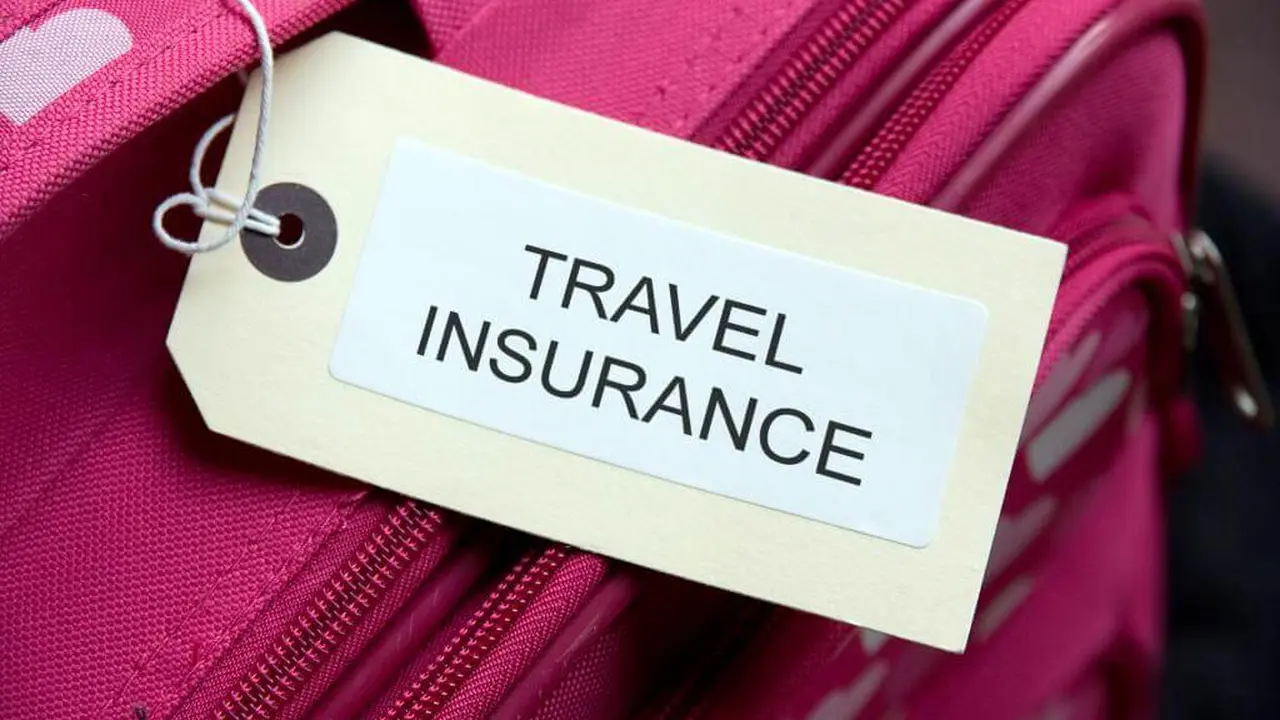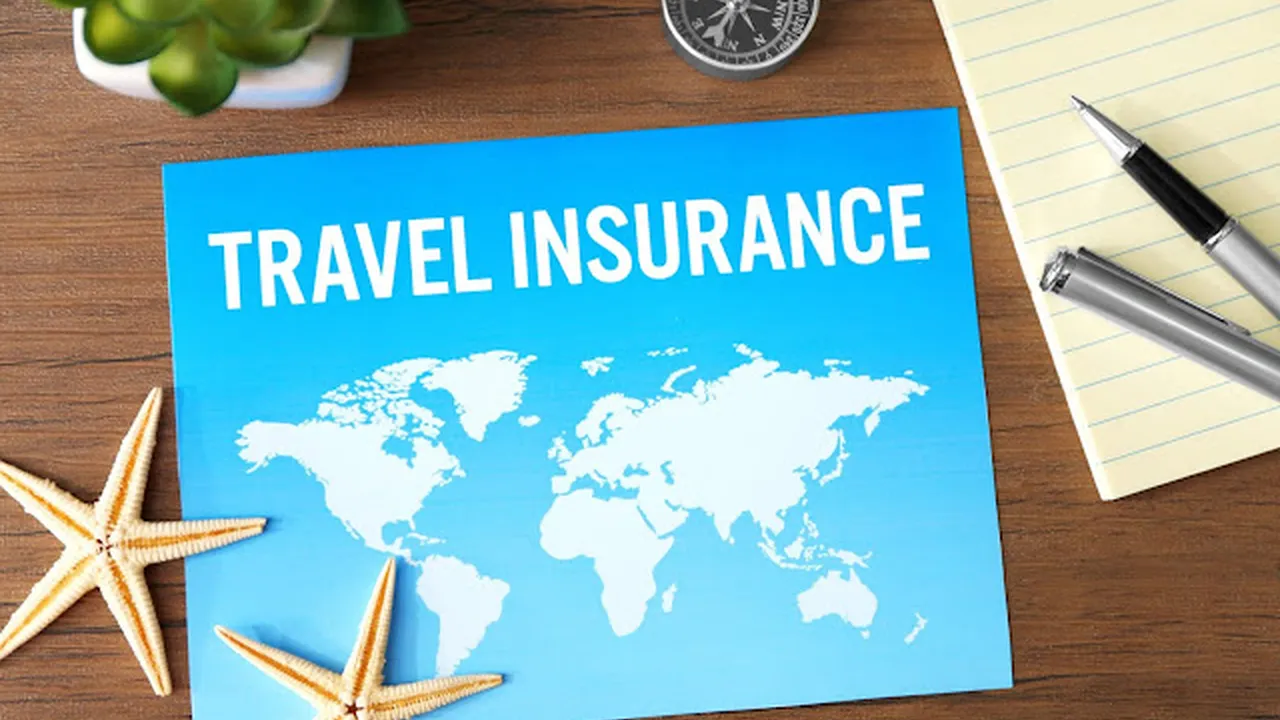DIY Travel Insurance: Why It's Usually a Bad Idea

The Allure of DIY Travel Insurance A False Sense of Security
Okay, let's be real. The idea of crafting your own travel insurance policy sounds appealing, right? Like you're taking control, cherry-picking exactly what you need, and saving a few bucks in the process. But hold on a second. Building your own travel insurance is often a recipe for disaster, and here's why.
The biggest problem? Most people simply don't understand the nuances of travel insurance policies. They might think they're covered for everything, only to discover a gaping hole in their coverage when they actually need it. Imagine getting sick overseas and realizing your "DIY" policy doesn't cover medical evacuation. Ouch! Or worse, finding out that your pre-existing condition isn't covered, leaving you with a massive medical bill. It's a gamble you probably don't want to take.
DIY travel insurance often involves stitching together various forms of coverage, which can lead to overlaps and, more importantly, gaps. You might have some coverage for medical expenses from one source, and some coverage for trip cancellations from another. But what happens when you need both? Are you sure those policies coordinate properly? Probably not. This fragmentation can leave you with unexpected out-of-pocket expenses and a whole lot of frustration during an already stressful situation.
Understanding The Risks Medical Emergencies and DIY Coverage
Let’s talk about medical emergencies. Imagine you're hiking in the Himalayas and you break your leg. You need immediate medical attention and possibly evacuation to a hospital that can handle your injury. If you've cobbled together a DIY travel insurance policy, you might not have sufficient coverage for these crucial services. The cost of medical evacuation alone can be astronomical, easily reaching tens of thousands of dollars, and potentially even hundreds of thousands depending on the location and complexity of the rescue.
A comprehensive travel insurance policy, on the other hand, will typically include coverage for medical expenses, emergency medical evacuation, and repatriation (the cost of returning you home after a medical emergency). It will also have a 24/7 assistance hotline that you can call for help, no matter where you are in the world. This support is invaluable when you're dealing with a medical crisis in a foreign country, especially if you don't speak the local language.
Trip Cancellations and Interruptions The DIY Nightmare
Beyond medical emergencies, trip cancellations and interruptions are another common reason why people file travel insurance claims. Imagine you have a family emergency that forces you to cancel your trip at the last minute. You've already paid for your flights, hotels, and tours, and you're out thousands of dollars. A comprehensive travel insurance policy can reimburse you for these non-refundable expenses.
But with a DIY policy, you might not be so lucky. You might have some coverage for trip cancellations, but it might not cover all the reasons you need to cancel. For example, it might not cover cancellations due to pre-existing medical conditions, natural disasters, or terrorism. Or it might have a very high deductible, meaning you'll have to pay a significant amount out of pocket before the insurance kicks in. The devil is always in the details, and with DIY insurance, you're often left to decipher those details on your own.
Lost Luggage and Personal Belongings DIY Coverage Gaps
Lost luggage is a travel nightmare. You arrive at your destination, excited to start your vacation, only to find that your suitcase is nowhere to be found. With a comprehensive travel insurance policy, you can file a claim for the value of your lost belongings. But with a DIY policy, you might not have any coverage for lost luggage at all. Or you might have very limited coverage, with a low maximum payout and a high deductible. This can leave you scrambling to replace your essential items and facing a significant financial loss.
Furthermore, DIY policies often fail to adequately cover personal belongings. If your camera, laptop, or other valuables are stolen while you're traveling, you might be out of luck. A comprehensive travel insurance policy will typically provide coverage for stolen or damaged personal belongings, up to a certain limit. This can provide peace of mind knowing that you're protected against unexpected losses.
Liability Protection The DIY Blind Spot
One of the most overlooked aspects of travel insurance is liability protection. Imagine you accidentally injure someone while you're traveling. You could be held liable for their medical expenses, lost wages, and other damages. A comprehensive travel insurance policy will provide liability coverage, protecting you from these potentially devastating financial consequences. DIY policies often completely ignore this crucial aspect of travel protection, leaving you vulnerable to lawsuits and financial ruin.
Specific Travel Insurance Product Recommendations and Comparisons
Okay, so you're convinced that DIY travel insurance is a bad idea. Great! Now, let's talk about some specific travel insurance products that can provide you with comprehensive coverage. I'll give you a few recommendations, along with their pros and cons, typical usage scenarios, and estimated costs.
World Nomads Explorer Plan For Adventure Travelers
Pros: Excellent coverage for adventure activities, including hiking, scuba diving, and skiing. High medical expense limits. 24/7 emergency assistance. Flexible policy options that allow you to extend your coverage while you're traveling.
Cons: Can be more expensive than other options. May not be the best choice for travelers who are not participating in adventure activities.
Usage Scenario: Ideal for travelers who are planning to engage in adventurous activities and need comprehensive medical coverage. Also a good choice for long-term travelers who want the flexibility to extend their policy as needed.
Estimated Cost: $100-$300 per month, depending on your age, destination, and coverage options.
Allianz Global Assistance AllTrips Executive Plan For Frequent Flyers
Pros: Comprehensive coverage for frequent travelers. Includes trip cancellation, trip interruption, medical expenses, lost luggage, and more. Annual plan covers multiple trips. Access to Allianz's extensive global assistance network.
Cons: Can be expensive if you only travel occasionally. May not be the best choice for travelers who are only taking one or two trips per year.
Usage Scenario: Ideal for business travelers or anyone who travels frequently throughout the year. Provides comprehensive coverage for a variety of travel risks.
Estimated Cost: $500-$1000 per year, depending on your age and coverage options.
Travel Guard Preferred Plan For Family Vacations
Pros: Good coverage for families traveling together. Includes trip cancellation, trip interruption, medical expenses, lost luggage, and more. Offers coverage for pre-existing medical conditions (with certain limitations). Provides access to Travel Guard's 24/7 assistance hotline.
Cons: Can be more expensive than basic travel insurance plans. May not be the best choice for solo travelers or travelers on a tight budget.
Usage Scenario: Ideal for families traveling together on vacation. Provides comprehensive coverage for a variety of travel risks, including medical emergencies, trip cancellations, and lost luggage.
Estimated Cost: $80-$250 per person, depending on your age, destination, and coverage options.
Comparison Table
| Feature | World Nomads Explorer | Allianz Global Assistance AllTrips Executive | Travel Guard Preferred |
|---|---|---|---|
| Adventure Activities | Excellent | Good | Good |
| Frequent Travel | Good | Excellent | Good |
| Family Travel | Good | Good | Excellent |
| Pre-Existing Conditions | Limited | Limited | Yes (with limitations) |
| Estimated Cost | $100-$300/month | $500-$1000/year | $80-$250/person |
The Hidden Costs of DIY Travel Insurance Weighing the Risks
DIY travel insurance might seem like a cost-effective option at first glance, but it can actually end up costing you more in the long run. If you have a medical emergency or other unexpected event, you could be stuck with a huge bill that you're not prepared to pay. A comprehensive travel insurance policy, on the other hand, can provide you with peace of mind knowing that you're protected against these potential financial risks.
Think of travel insurance as an investment in your peace of mind. It's a small price to pay for the security of knowing that you're covered in case something goes wrong. Don't let the allure of DIY savings blind you to the potential risks. Choose a comprehensive travel insurance policy and enjoy your trip with confidence.
Expert Opinions on Travel Insurance Importance
I'm not just saying this. Travel experts and financial advisors almost universally recommend travel insurance. They've seen firsthand the devastation that can result from traveling without it. They know that a medical emergency or a cancelled trip can quickly turn into a financial nightmare. That's why they always advise travelers to protect themselves with a comprehensive travel insurance policy.
The Bottom Line Is Travel Insurance Worth It
So, is DIY travel insurance a good idea? Probably not. It's a risky gamble that could leave you with significant financial losses and a whole lot of stress. Instead, invest in a comprehensive travel insurance policy from a reputable provider. It's the best way to protect yourself against the unexpected and enjoy your trip with peace of mind. Now, go out there and explore the world, knowing you're covered!
:max_bytes(150000):strip_icc()/277019-baked-pork-chops-with-cream-of-mushroom-soup-DDMFS-beauty-4x3-BG-7505-5762b731cf30447d9cbbbbbf387beafa.jpg)






